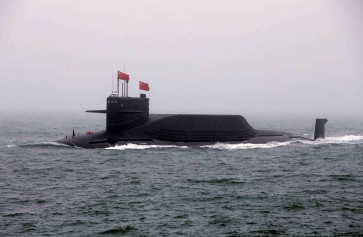Popular Reads
Top Results
Can't find what you're looking for?
View all search resultsPopular Reads
Top Results
Can't find what you're looking for?
View all search resultsPetra, the lost city of the Nabatean
Taking a break: Camels sit while their riders explore the beauty of the structures
Change text size
Gift Premium Articles
to Anyone
Taking a break: Camels sit while their riders explore the beauty of the structures.
The word petra in ancient Greek refers to the rock. But in Ma’an, Jordan, Petra is known as the lost city of the Nabatean, the ancient peoples of North Arabia.
Possibly established as early as 312 BC, Petra was once a major trade city located on the slope of Mount Hor in a basin among the mountains, which formed part of the eastern flank of Arabah (Wadi Arabah), a large valley running from the Dead Sea to the Gulf of Aqaba.
Enclosed by towering rocks and watered by a perennial stream, Petra not only possessed the advantages of a fortress, but controlled the main commercial routes that passed through it to Gaza in the west, to Bosra and Damascus in the north, to Aqaba and Leuce, to the Red Sea and across the desert to the Persian Gulf.
Evidence suggests that settlements existed in and around Petra in the 18th dynasty of Egypt (1550 - 1292 BC).
It is listed in Egyptian campaign accounts and the Amarna letters as Pel, Sela or Seir.
In 106 AD, when Cornelius Palma was governor of Syria, the part of Arabia under the role of Petra was absorbed into the Roman Empire as part of Arabia Patraea and became its capital.
It was around this time that the Petra Roman Road was built.
Petra declined rapidly under Roman rule, in large part from the revision of old sea-base routes. In 363, an earthquake destroyed many buildings and crippled the vital water management system.
The ruins of Petra were an object of curiosity in the Middle Ages and in 1812 Swiss traveler Johan Ludwig Burckhardt described it to the Western world once more.
In 2007, Petra was named one of the New Seven Wonders of the World and became the symbol of the Kingdom of Jordan.
The lost world: Tourists walk through a path toward the Treasure (Al-Khazneh) structure, which is carved on the wall of Petra.
Hole into the past: A guide accompanies tourists visiting structures carved out of a mountain wall, the heritage of the Nabatean people.
Joy ride: A man controls his horse and cart while transporting tourists around the archaeological site.
Ancient way: Horses are the main transport mode for tourists.
Contemplation: A man stands, taking in the beauty of the stone carving.
— Text and photos by JP/Jerry Adiguna















